![]()
![]()
![]()
Use LEFT and RIGHT arrow keys to navigate between flashcards;
Use UP and DOWN arrow keys to flip the card;
H to show hint;
A reads text to speech;
21 Cards in this Set
- Front
- Back
|
The atom comes from which Greek word, and means what? |
Atomos, "indivisible" |
|
|
John Dalton's Atomic Theory |
1. Atoms make up everything, and are indivisible and indestructible 2. Atoms of the same element are identical 3. Atoms of two or more elements form a compound 4. In a chemical reaction, the atoms rearrange themselves. |
|
|
Gold Foil Experiment |
Conducted by Ernest Rutherford. Aimed alpha particles at a piece of gold foil, concluded that atoms are mostly empty space. |
|
|
Particles that make up the nucleus of the atom. |
Neucleons, comprised of protons and neutrons |
|
|
Isotopes |
Atoms of an element that have different numbers of neutrons, and therefore different mass numbers. |
|
|
The atomic mass is... |
The sum of all the neucleons of an atom. |
|
|
Quantum |
A very specific quantity of energy |
|
|
Bohr suggested that electrons do what to get to a higher energy level. |
Electrons can absorb a quantum of energy, then jump to a higher energy level. Known as the excited state. |
|
|
Principle quantum number represents.. |
The main energy level of the electron. The maximum number of electrons in this level is found using the formula 2n^2 |
|
|
In 1s^2, describe the parts. |
"1" - energy level "S" - sublevel "2" - number of electrons in the sublevel |
|
|
Hund's rule states? |
Orbitals of equal energy are each occupied by a single electron before an orbital is occupied by a pair of electrons. |
|
|
The Pauli Exclusion Principal states? |
No two electrons in the same atom can have the same state. Because of this, electrons can either be spin up or spin down. |
|
|
Formula to figure wavelength |
C = wavelength x frequency Therefore: Wavelength = 3x10^8 ÷ frequency Solution in m |
|
|
Formula to figure frequency |
C = wavelength x frequency Therefore: Frequency = 3x10^8 ÷ wavelength Solution in hz |
|
|
Formula to figure energy |
E = h x frequency E = 6.26x10^-34 x frequency Solution in Jules |
|
|
Energy levels |
S, P, D, F 1s^2 2s^2 2p^6 3s^2 3p^6 4s^2 3d^10 4p^6 5s^2 4d^10 5p^6 6s^2 |
|
|
Nobel Gasses |
He - 1s^2 Ne - 2p^6 Ar - 3p^6 Kr - 4p^6 Xe - 5p-^6 Rn - 6p^6 |
|
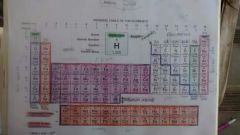
S block? |

S block |
|
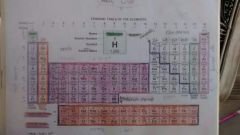
P block? |
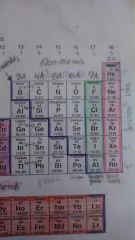
P block |
|
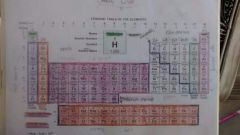
D block? |
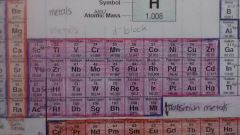
D block |
|
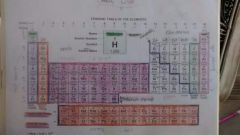
F block? |
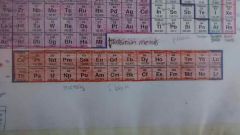
F block |

